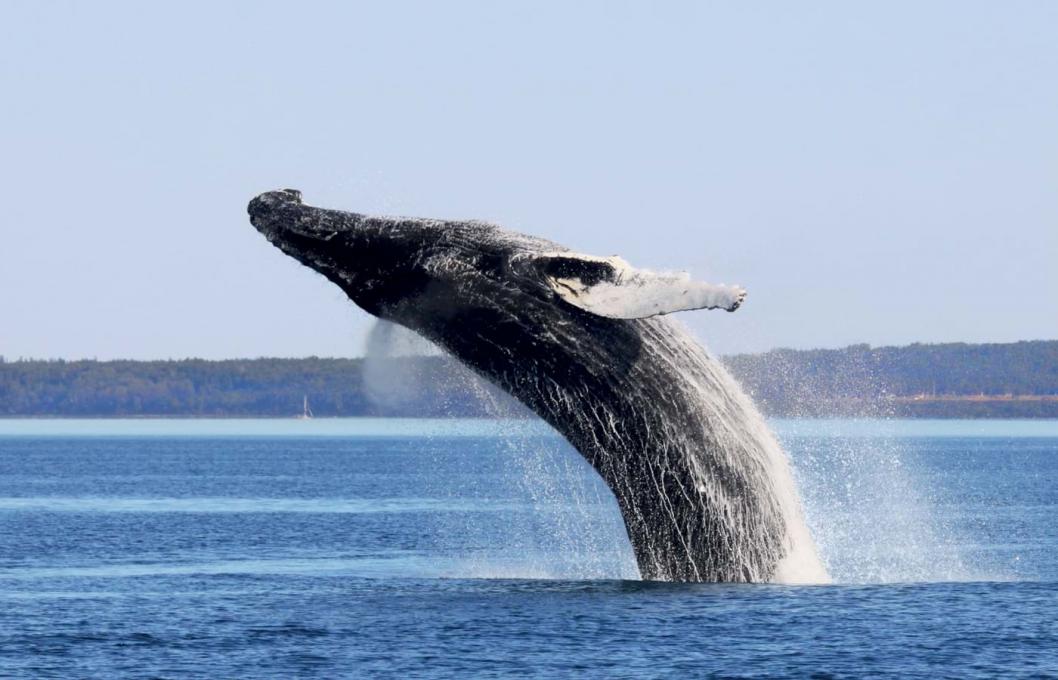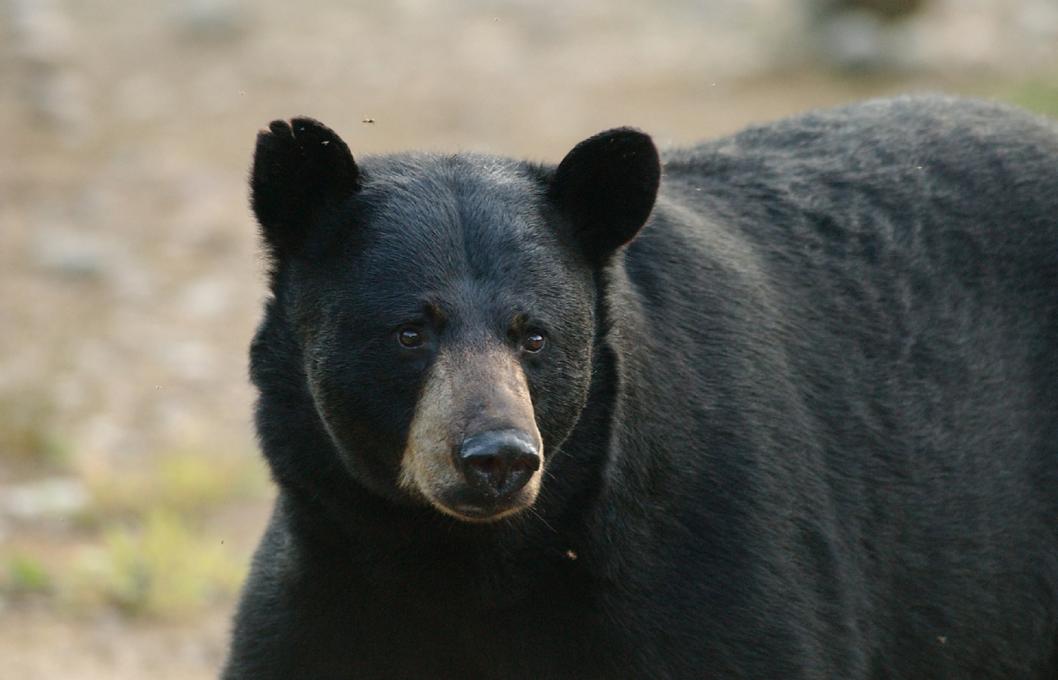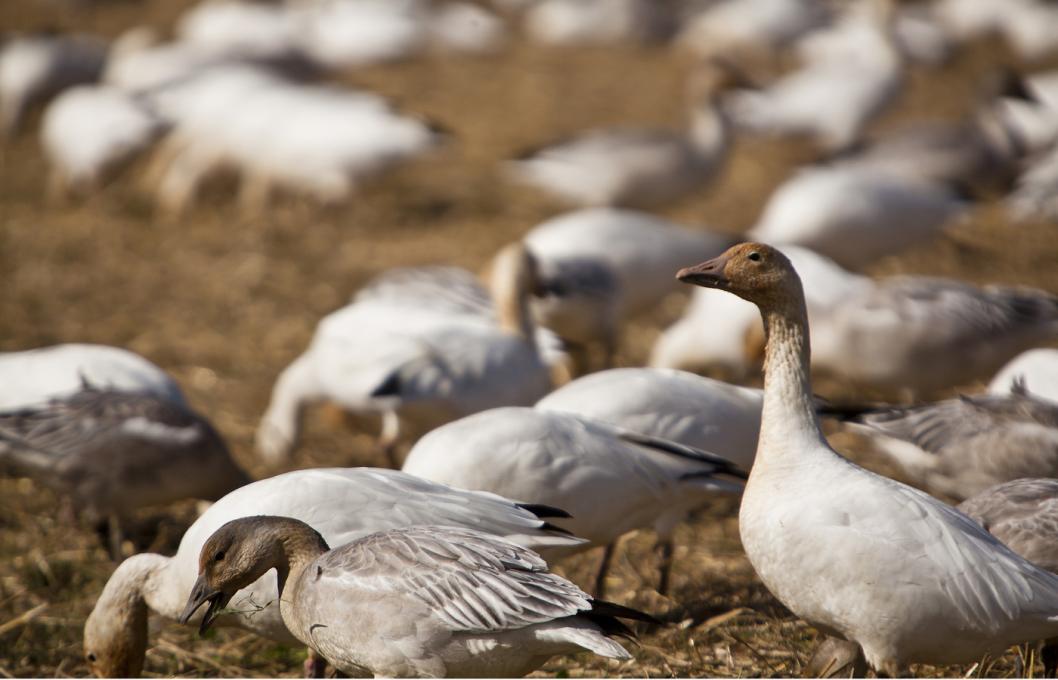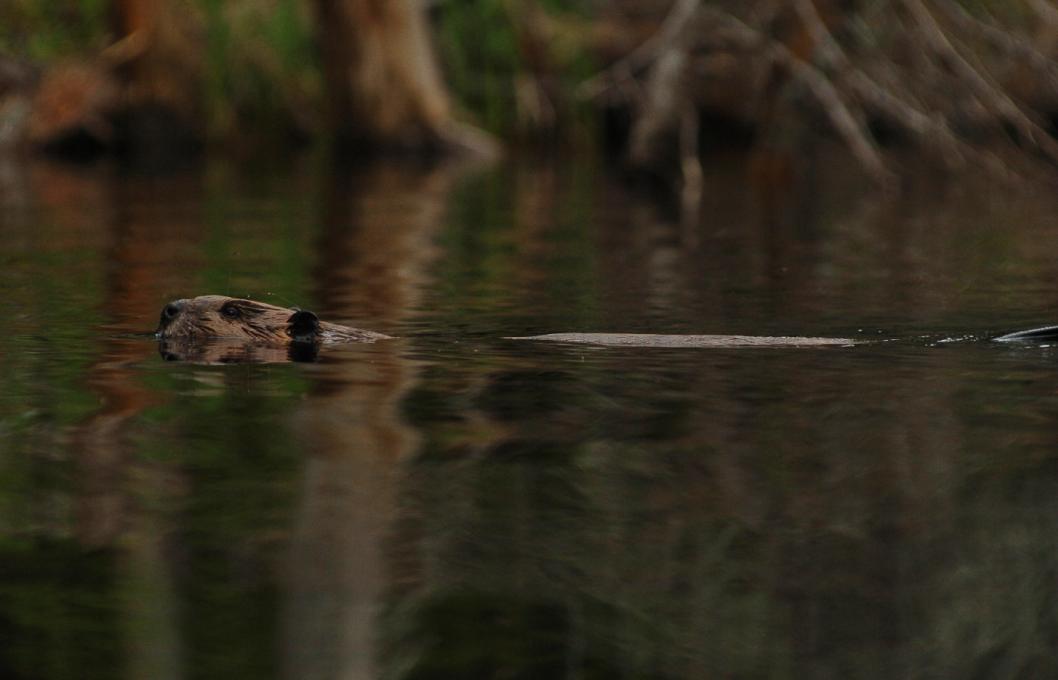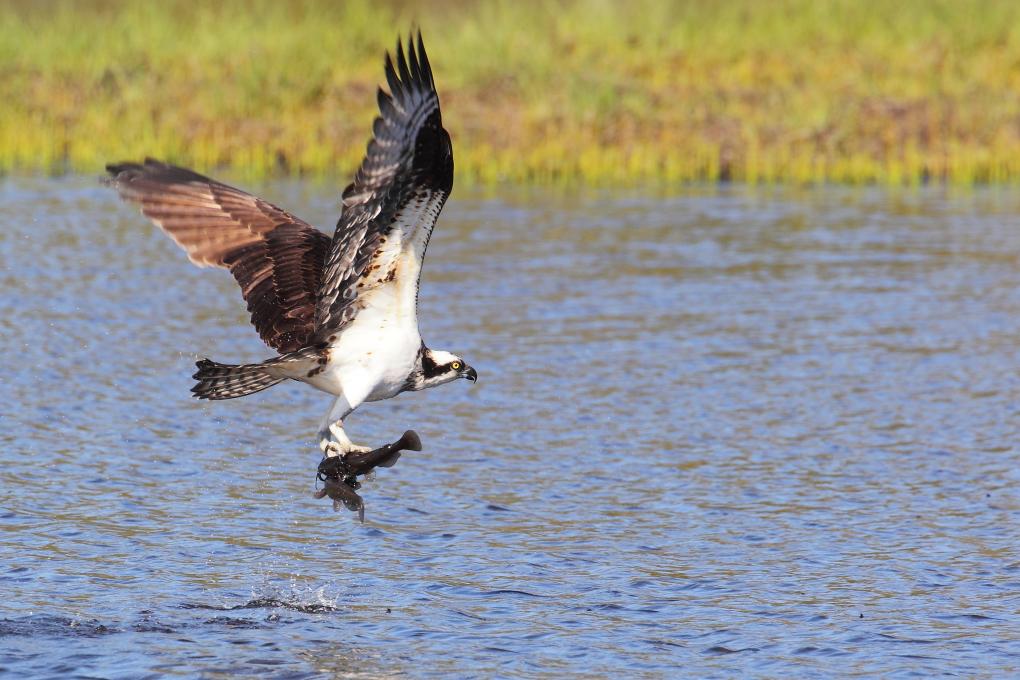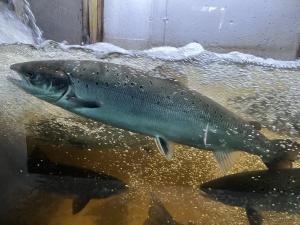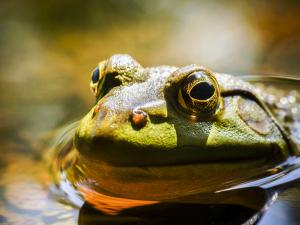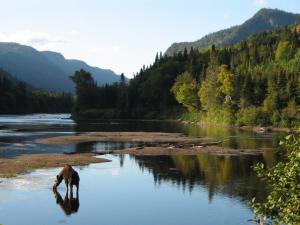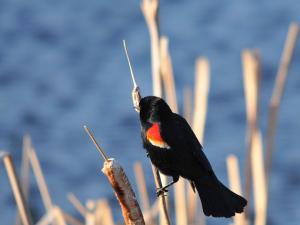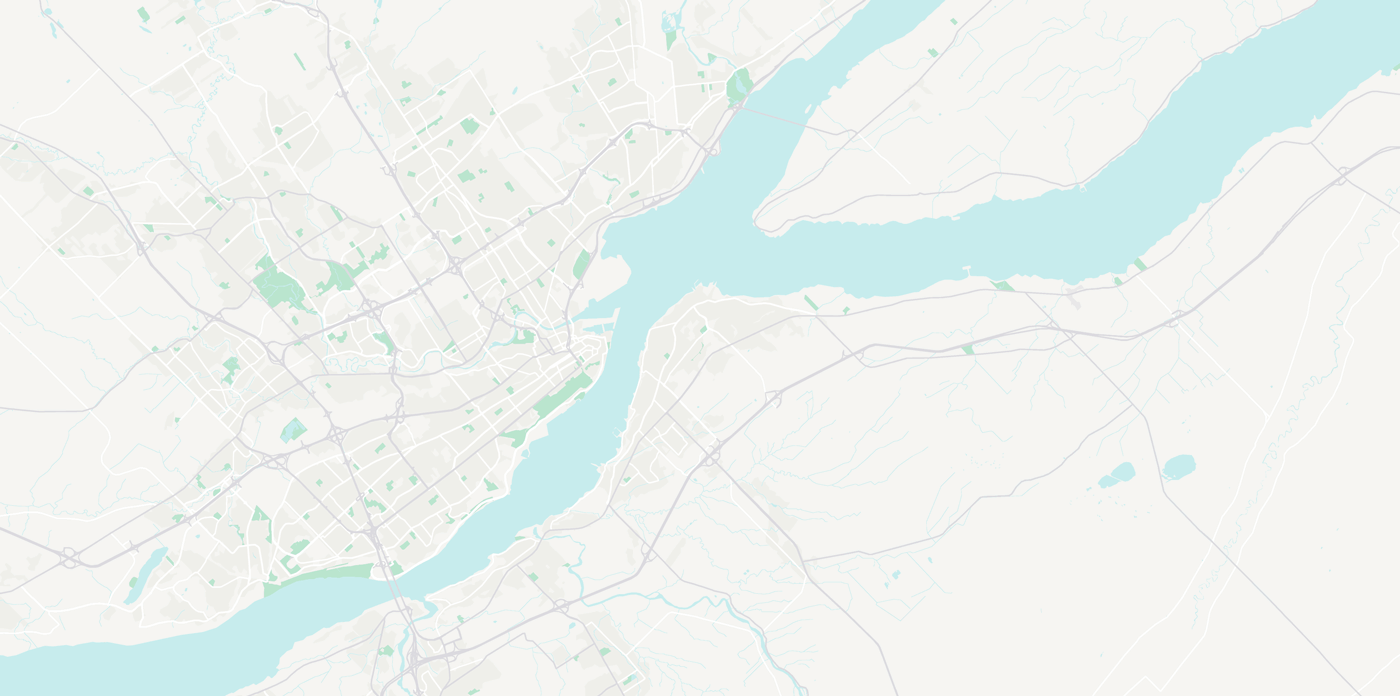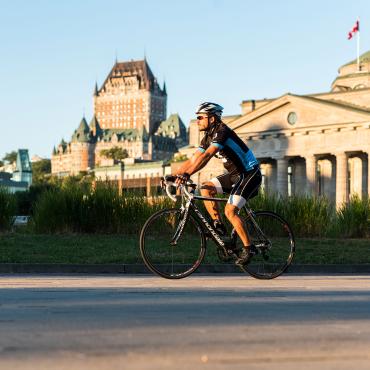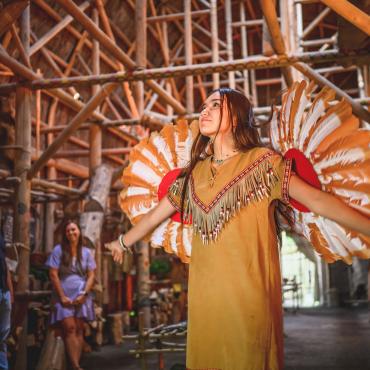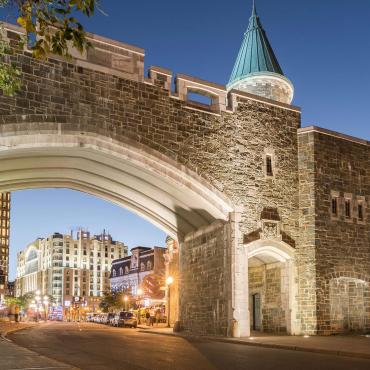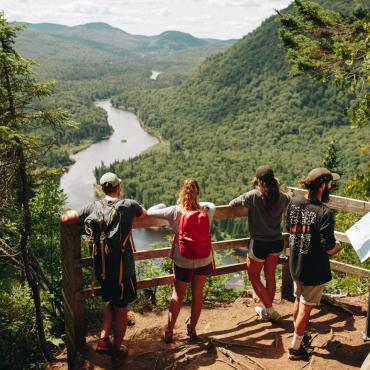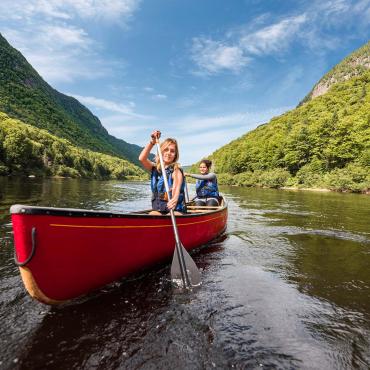Wildlife Watching
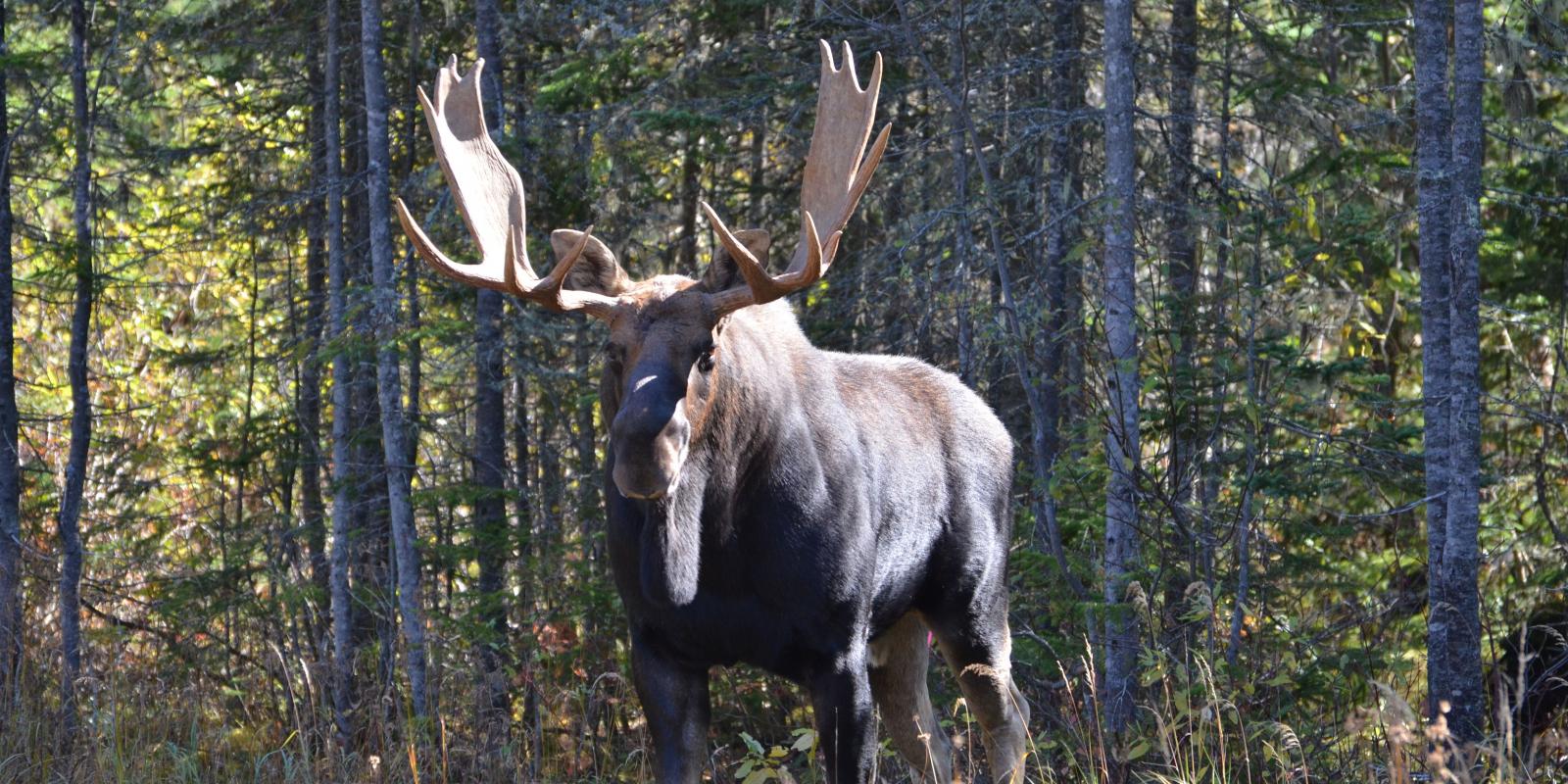
Québec City is surrounded by magnificent forests, natural areas of all kinds, and several national parks. Suffice to say, it’s a great place to see wild animals in their natural habitats. Along with the animals mentioned below, hikers often sight groundhogs, red squirrels, porcupines, raccoons, hares, and white-tailed deer.
Moose
 Réserve faunique des Laurentides
Réserve faunique des Laurentides
This North American giant—the biggest antlered animal on the planet—can weigh up to 600 kg. Antlers start to appear on the males in the middle of summer and reach full size by early September, just in time for mating season. Even with their fall antlers, these imposing animals can move through the forest without making a sound.
Where to see moose: Moose are kings in Jacques-Cartier National Park, especially in the fall. Whether you are hiking or canoeing, keep your eyes peeled!
Whales
 Catherine Dubé
Catherine Dubé
The mouth of the Saguenay Fjord and the St. Lawrence estuary are particularly rich in zooplankton. This concentrated food supply draws 13 whale species to the area, including the blue whale—the largest marine mammal on the planet. One species, the beluga, spends the entire year in the St. Lawrence. This fragile whale population is classified as endangered.
Where to see whales: There are one‑day whale‑watching tours that leave from Québec City. If you have a car, you can head out to Tadoussac for a boat or zodiac tour with Croisières AML.
Black Bears
 SEPAQ, Steve Deschênes
SEPAQ, Steve Deschênes
Despite their burly appearance, black bears are timid and discreet. As omnivores, they eat plants, fruits, nuts, insects, fish, and other animals, and generally live alone. Black bears hibernate through the cold months but can wake up during winter warm spells.
Where to see black bears: Black bears can be safely observed all summer long with Aventure Inukshuk as well as at Pourvoirie du Lac Moreau.
Greater Snow Geese
 Environnement et changement climatique Canada
Environnement et changement climatique Canada
Snow Geese spend their summers in the High Arctic tundra and winter along the eastern coast of the United States. They migrate over 4,000 km along a corridor that runs through Québec.
Where to see greater Snow Geese: In the spring and the fall, these migratory birds make a stop at the Cap Tourmente National Wildlife Area. Naturalists are on hand with telescopes during migration season to answer visitor questions. The wildlife area is a great observation spot for many other bird species as well.
Beavers
 SEPAQ, Steve Deschênes
SEPAQ, Steve Deschênes
Beavers are the biggest rodents in North America. They’re also able swimmers and highly skilled engineers. Beavers build their lodges on rivers and streams and maintain systems of dikes and channels in the surrounding aquatic environment. They don’t hibernate, but spend more time resting during the winter.
Where to see beavers: Parc national de la Jacques-Cartier has beaver‑watching activities from May to October. Beaver families are regularly spotted along the park’s Scotora trail.
Bird-watching
 Jean-Pierre Desroches
Jean-Pierre Desroches
The Québec City area has a lot to offer birdwatchers. Many species, including chickadees, pileated woodpeckers, and blue jays, can be sighted year round. If you’re lucky, you may even encounter one of the great horned owls or snowy owls that overwinter in the region. Other species that nest in the area during the summer include the ruby-throated hummingbird, great blue heron, American robin, rose-breasted grosbeak, and Cape May warbler.
Where to see birds: Birds can of course be observed in nearly every urban park or outlying area, but with 160 different species sighted to date, Marais du Nord is an especially good spot for birders.
Tips for Wildlife Watching
- Sunrise and sunset are the best times for spotting wild animals.
- Road signs for moose crossings are posted in places where there’s a high risk of hitting a moose. If you see one, slow down.
- If you meet a bear, stay calm and alert. Do not run. Give the bear space, then leave the area or make a wide detour if you have to go around.


